Not sure how to keep a chicken coop warm in winter? Then pull up a chair, because we have quite a few (battle-tested) ideas for you today.
(Want to know how to keep your flock’s water from freezing? Get my genius hacks here).
While the winters never get too brutal here in Missouri, we still do get our share of freezing temps (usually in January and February) thanks to the polar vortexes from our Canadian friends up North.
And trying to keep a chicken coop warm in winter is never fun. It’s usually a battle of ingenuity, and we’re kept on our toes trying to find new ways to keep the flock toasty and cozy when it’s gotten so cold we don’t even have a prayer of getting the hose unfrozen.
Now before we begin, just remember: For the most part, your chickens will be fine during the winter.
Every year, a few people ask whether their hens will freeze in temperatures below 40 degrees, and the answer is no. Your chickens will likely be fine no matter what.
Only once temperatures dip below zero and into the VERY below zero temperatures (negative 30 degrees, for example) do you really need to be concerned about keeping them warm.
In temperatures above zero, your chickens will fluff their feathers to stay warm and all the walking around and foraging will help keep their blood circulating and their body temperature up.
At night, they’ll bundle together on a roost and keep their little legs warm by sitting on them.
But you still are probably wondering how to keep a chicken coop warm in really cold weather, so here are some ideas we’ve used on our farm to get you started!
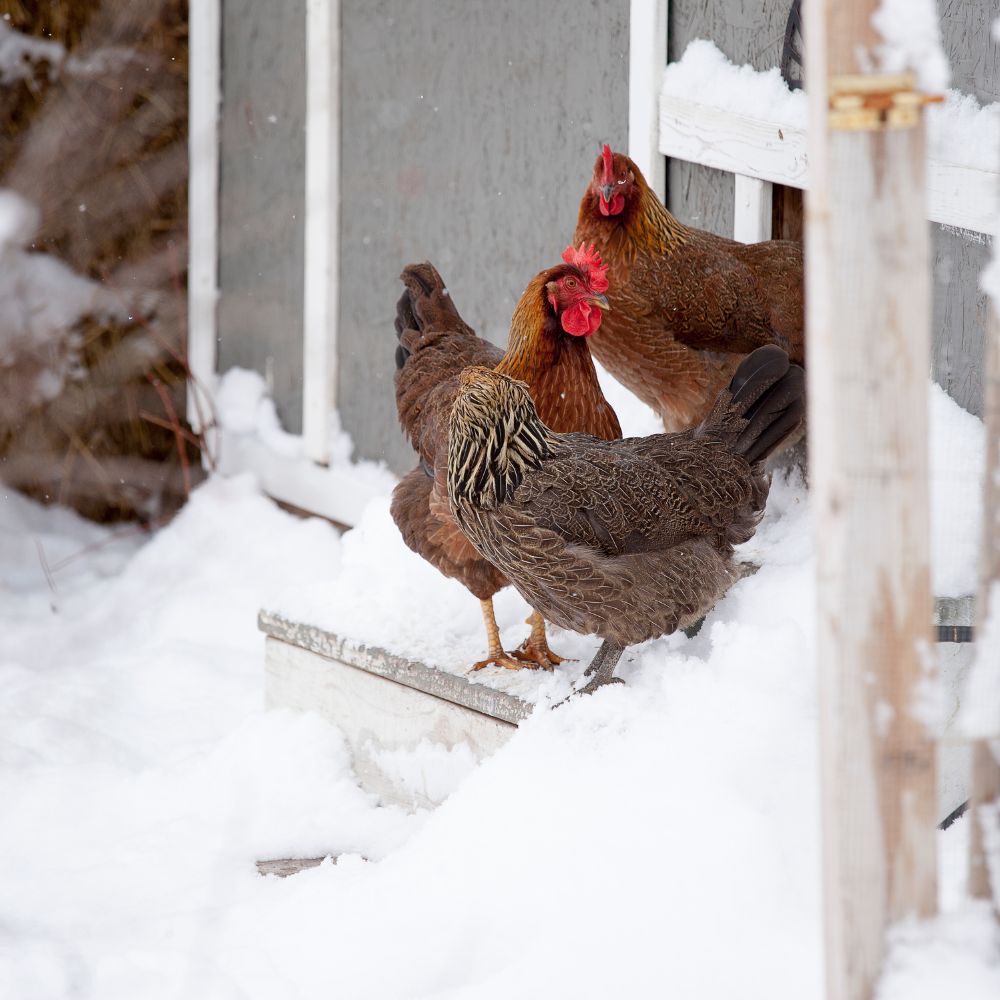
Table of Contents (Quickly Jump To Information)
1. Shut the door midday and let the sun warm your coop up
We’ve had a lot of luck with the various coops on our property by using solar energy to keep the coops heated. Our coops have windows, so for the first part of the day, we can open the coop doors and let the hens forage.
About mid-day, you can close the doors and allow the heat to get trapped inside the coop, keeping it warmer than it would be otherwise.
Now, don’t ask me how many degrees this will raise the temperature – that’s going to depend on a wide variety of factors.
And this won’t work 100% of the time. But it might be the difference between 22 degrees and 32 degrees in the coop – and that’s a heck of a difference.
2. Use lots of straw & clean out every week
Straw is an amazing insulator – that’s why you see those straw houses becoming so popular.
Putting about a foot deep of straw in your coop will do wonders keeping the cold air out and the warm air generated by your flock’s body heat in. As a bonus, your flock won’t have to stand on a cold floor.
Now, you might hear that straw is not good to use as bedding – to each his own. Some people have decided that straw harbors mites, and the answer is if you don’t clean your coop, pretty much anything will harbor mites.
Clean the straw out of your coop weekly and add mite repelling nesting herbs, and you’ll be good to go.
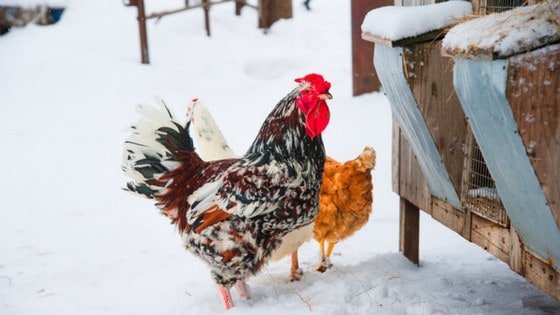
3. Deep litter method
If you don’t know what the deep litter method is, or if you’ve heard of it but aren’t sure what it entails, then you can learn everything you want to know right here.
Now for full disclosure, I don’t use the deep litter method. But people who DO use it claim it can raise the coop temperature by about 10 degrees – pretty significant when you’re talking about daily highs in the teens.
The reason it generates so much heat is because of all the layers of straw, manure, etc. The manure dropped by the chickens composts along with the straw, and the breaking-down process causes heat. You may have noticed heat coming from your garden compost before – it’s the same principle.
4. Radiant space heater
Like the deep litter method, this one isn’t going to be for everyone. If you’re not sure what a radiant heater is, you can see an example here.
Now note, I didn’t say heat lamp – that’s a definite no-no because they get way too hot. Every winter, there’s a slew of posts on Facebook about people who used a heat lamp and their coop went up in flames.
Just say no to heat lamps. A coop heater with bulbs is just plain risky.
Radiant heaters are a different thing – they don’t get so hot and have some safety features. They can raise the temperatures in your coop a few degrees, and that can make all the difference.
Just note, that you will need an electrical source to use a radiant space heater.
Now, would I personally use one of these in my coop? Probably not. I’m WAY too paranoid about fires and our winters are not that cold – it’s the odd day that things get below zero.
That being said, you might want to use one – and if you do, the more power to you.
5. Use a tree line to break the wind
We have one horse pasture that I swear is 10 to 20 degrees warmer than the others. When the water is frozen solid in the other fields, it’s not even icy in this particular pasture.
And the reason is that there are a lot of trees causing a ginormous windbreak. And it makes all the difference for wind chill.
It’s pretty insane how much a tree line can keep a coop warm simply because it’s keeping the cold winds away from your flock.
If your chickens are in a tractor, or if you can somehow move them behind a tree line, you’ll be able to keep the coop from losing as much warmth.
You can also use something else to create a windbreak (moving the coop behind a structure so it’s protected), that’ll work as well.
If you plan to use straw in your coop, you could even buy extra straw bales to create a “wall” to break the wind (don’t laugh – we’ve done it and it WORKS.)
This one will take a bit of planning on your part, but you can save a lot of heat by simply eliminating drafts. (After all, it IS those polar vortexes that contribute to the cold in the first place).
Making sure your coop doors and windows have proper insulation will go a long way.
Don’t use any of that spray foam, however (my husband loves that stuff and it’s a nightmare to clean up, and your chickens might decide to taste test it – never a good thing.)
If you’re trying to figure out how to heat a chicken coop in winter, then spend a little and get something better than foam spray that will do the job without taking the chance your flock will try to eat it.
Reasons To Keep a Coop Warmer
- You may want to keep chickens warm (or at least warmer) if you have breeds that aren’t as hardy as others
- Freezing weather will also freeze your eggs if you can’t gather them throughout the day
- Very cold temperatures can pose a danger to your chickens’ combs (especially large combs) and wattles
- Keeping chickens in areas that have extreme winter months may make it necessary
- It may be necessary if you have an unusally cold winter (to avoid things like frostbite)
Bonus Tips
Bonus Tip #1
We are talking about keeping your coop warm (or warmer than frigid), but you can also help keep your chickens themselves warmer. How? Well, by making sure they have enough protein and nutrients. You can give them protein packed treats like PowerHen, or non-GMO cracked corn before bedtime.
These are surefire ways to get your flock warmed up through the process of digestion. Plus they will know you love them and they will love you even more!
Bonus Tip #2
If you have the time, you can also give them hot water (not boiling). They will stay more hydrated which will also help them continue to lay eggs. The extra benefit is the warmth from the water will provide warmth for the hens too. It may not be a world changer, but every little bit helps.
Bonus Tip #3
If you are feeling extra ambitious, you can make a greenhouse type addition to your coop. Use clear plastic around a frame of some sort. This will not only help give your feathered friend plenty of space to run and hop around, but it will also creat a warm spot for them to hang out.
Bonus Tip #4
You can put petroleum jelly on your flocks combs and wattles to help prevent frostbite when the temps are extremely low.
Maat van Uitert is a backyard chicken and sustainable living expert. She is also the author of Chickens: Naturally Raising A Sustainable Flock, which was a best seller in it’s Amazon category. Maat has been featured on NBC, CBS, AOL Finance, Community Chickens, the Huffington Post, Chickens magazine, Backyard Poultry, and Countryside Magazine. She lives on her farm in Southeast Missouri with her husband, two children, and about a million chickens and ducks. You can follow Maat on Facebook here and Instagram here.

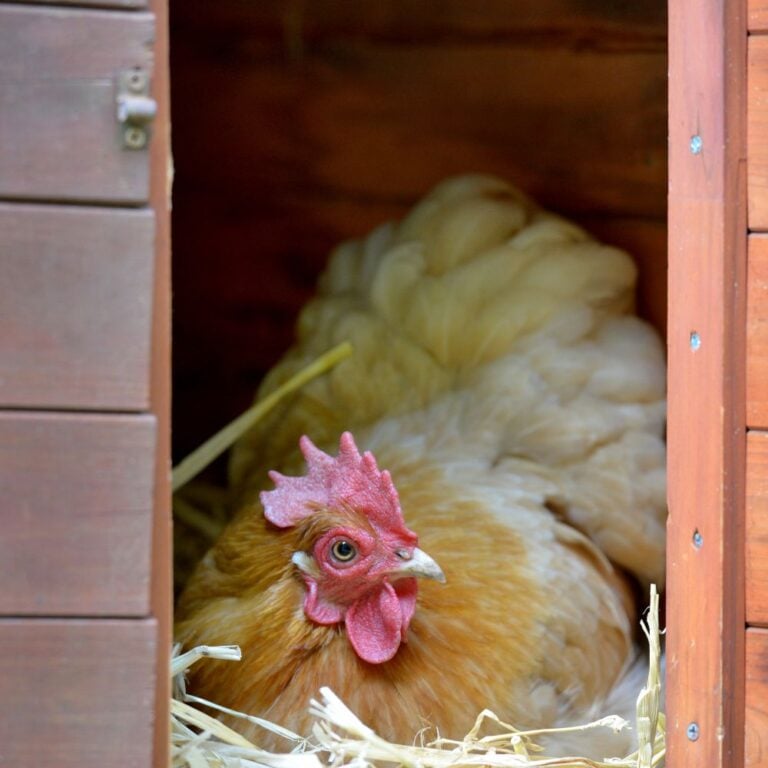
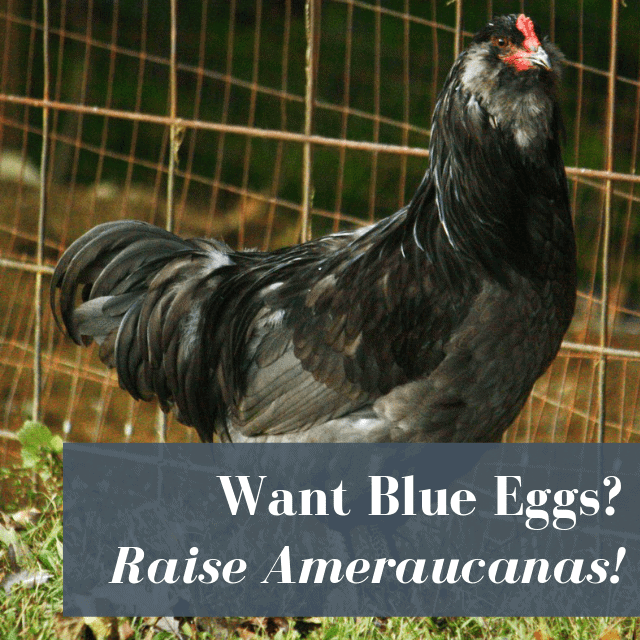
![The Best Herbs For Chickens To Eat? These Are Them (Plus One For First Aid!) [Podcast]](https://thefrugalchicken.com/wp-content/uploads/2016/01/herbs-for-chickens.png)
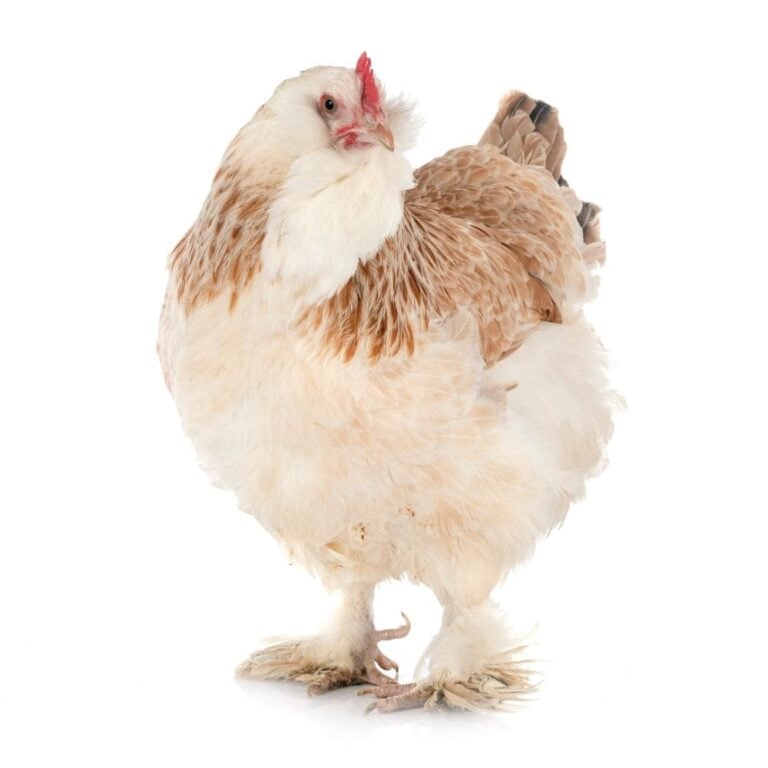

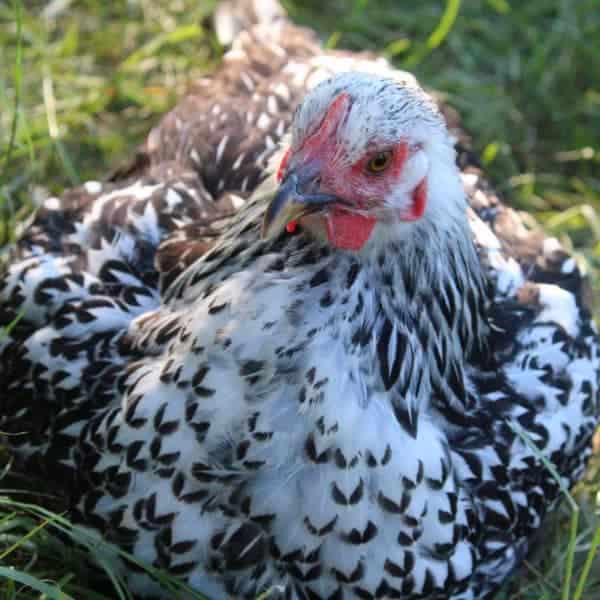
Please address my concern about insulating my small coop too tightly. I am in Pennsylvania. I read somewhere that we do Not want to seal up the coop because this will cause ammonia to build-up which is harmful; that, we need to keep good ventilation.
If you clean your coop regularly and use a moisture absorber, you should be ok. If your hens go out during the day and the door is kept open during the day, then that’s sufficient ventilation. If your chickens stay cooped all the time or you’re not cleaning out the manure regularly, then you’ll need to worry about ammonia build up.
Large bush.
I live in the city and this is the 1st winter that I am going to face with my birds. I bought a pre-made coop the walls are thin. My concern is keeping them warm. Temps here can get into the single and negative digits with wind chills. I have them placed next to a structure which block the wind from 1 side. I was thinking about getting bales of hay or straw and line them up 2 high around the outside of the entire coop. Is this a good idea? Also, I am the one that typically opens their door to let them out. With daylight starting later should I be waiting until later to open their door as well as at night should I be closing their door earlier? Their water and food stays below in the run.
The hay bales are a great idea. Yes, I would open and close their doors later & earlier, respectively. They’ll be warmer and better protected from predators.